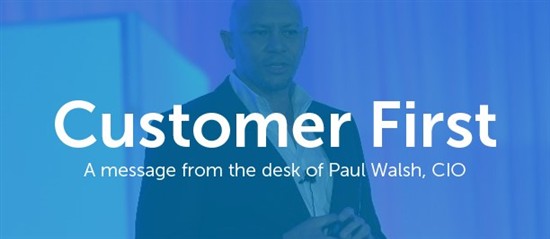I hope you enjoyed my blog series so far where I have talked about creating new levels of convenience in the retail experience. My first post focused on finding the patterns in the data and highlighted the work Dell is doing with Staples to understand their customers better through social media listening. My last post introduced the notion that technology and processes must appear invisible to allow our customers to experience their retail journey in a seamless way and shared how Dell has helped Hilton create a global mobile platform for apps that ease their check in experience.
To truly create new levels of convenience we need to remove the friction across the entire retail experience by connecting together as a network of retailers that allow our customers to use a single identity across our brands. As the customer, you would choose what information to share throughout your trusted retailers so that they can create an experience around you as a consumer without you having to authenticate yourself for each new retailer you interact with.
This is not a far-fetched idea. The introduction of social sign in (i.e. using your identity from one of your social media accounts) is the beginning of a universal identity and is already widely used across websites. Actually, Dell.com introduced this feature last year. Studies have shown that 24 percent of online consumers abandon a purchase if they have to register first. The single identity created through social sign in not only makes shopping easier, but allows us to personally tailor an experience for you based on the information you share between the accounts. This social information can even be used to tailor deals and discounts just for you through your Dell Advantage account.
Payments is also another area where we see these single identities really streamlining the online shopping process. Not only do we offer Bitcoin as a payment option in the US, UK and Canada, but we also offer Paypal and Paypal Express Checkout. This payment option again uses a single payment identity for consumers to easily complete a transaction without having to re submit their payment details. Dell will continue to add many more payment options to Dell.com across regions through our payment gateway, which uses an API driven solution for all payment related functionality from collection of payments, validating and processing to fulfilling the purchase. Payment as a service allows us quicker time-to-market using best in class technology as we look to add more digital wallets as payment options.
As these interconnects between retailers grow, a universal identity that connects the patterns in your data will create an elevated retail experience. And it won’t matter how you engage a brand…whether it be in store, on a mobile device, or through an Internet of Things sensor…the device or method will be invisible and the experience will be what matters. Let me give you an example of what it could look like:
I have a rather large family. And when we travel, it’s a big event where I have to book the airline tickets, reserve a car that’s big enough for all of us, find a hotel that has sufficient space, and locate a grocery store so we aren’t eating out every night. That’s a lot to do and we haven’t even gone on the vacation yet.
What if when I made a notation of the vacation dates in my online calendar a chain of events kicked off automatically that did everything for me – from booking my tickets to filling the fridge at our vacation lodging? All my family has to do then is arrive at our location and relax. After all, these companies I’m interacting with already have information about me, whether it be from a loyalty program or previous transactions. Together, they make up a trusted network of retailers and service providers. If they connect, they open a world of opportunity and convenience for me and my family.
This is the future of retail. The more we can become connected as a universal network of retailers, the more we can adapt to consumers’ changing demands and elevate the level of convenience they receive. Yet, in order to succeed, we need to understand how to simultaneously collaborate and compete.
Dell has thousands of partners across the globe that we work with every day. Think about what we can do together to create a great experience for our customers, remove friction and enable new levels of convenience.
We are standing at the edge of a once-in-a-lifetime opportunity as retailers. Consumers are increasingly open to new methods of engagement with our brands, advanced technology makes our lives easier and best practices provide a clear roadmap to customer satisfaction. If we do the three things I have talked about in this blog series we can remove that friction by enabling an experience that forms around each individual customer and lets them engage our brands on their terms. Find the patterns in the data, make their engagement with your brand seamless by making the technology invisible and finally, connect with other retailers to form a universal network that collaboratively elevates the customer experience together. This is the future of retail. Are you ready?
